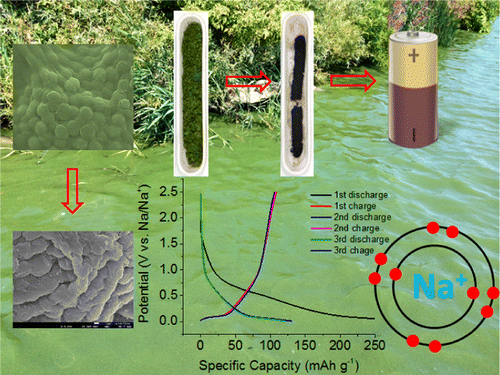Convert harmful algae into Na-ion battery electrodes
A team of researchers, led by Dr. Da Deng, assistant professor of chemical engineering and materials science at Wayne State University, has found that baking algae in a furnace with argon gas at temperatures of 700-1000°C could convert it into a material called 'hard carbon'. This hard carbon can be used as high-capacity, low-cost electrodes for Na-ion batteries.
During his commute to work in the summer of 2014, Deng heard several news reports about the harmful algal bloom that poisoned Toledo’s water system and left almost 500,000 people without drinking water. During one of those drives, Deng - who was trained as an environmental engineer - started daydreaming about turning the algae from trash into treasure.
Since that fateful commute, Deng has published research detailing his research team’s work collecting algae directly from Lake Erie and baking it into hard carbon. Deng’s hope is that cheap Ni-ion batteries will one day replace the Li-ion batteries that power our smartphones.
Deng commented: “Sodium has similar properties to lithium, but it is much more abundant. We are working now to optimise the performance of algae-derived carbon in storing the sodium ions and how many times it can be used and charged so that we can compete with existing Li-ion batteries.”

In addition to enhancing phones, harvesting algae blooms could help mitigate environmental problems and provide a source of biomass.
Deng said that while large-scale harvesting of harmful algae blooms from lakes is not an inexpensive or easy task, it may become more feasible if the algae are converted into high-value products, such as batteries for personal electronic devices or EVs.





